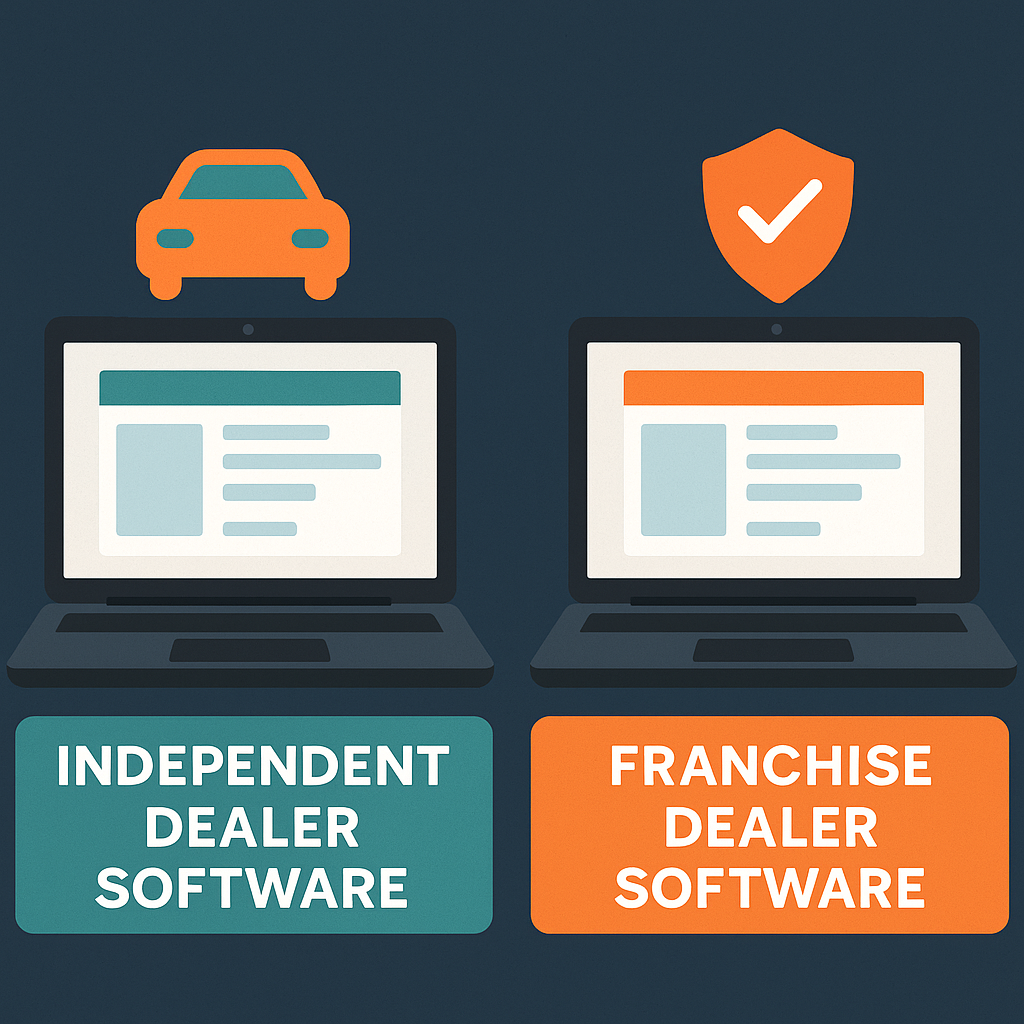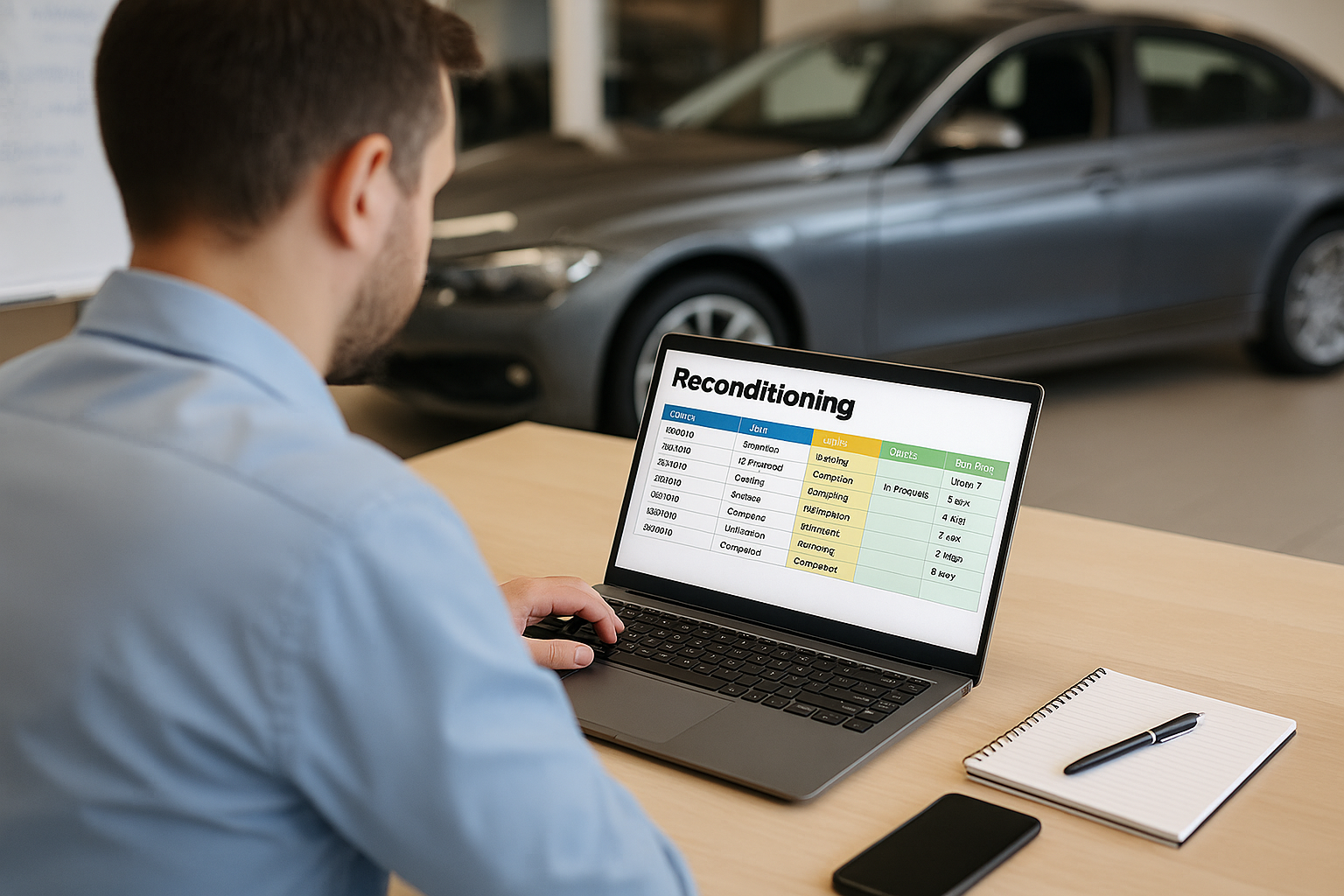In the fast-paced automotive industry, car dealers must stay informed on key performance indicators (KPIs) and dealership terms that impact their operations. Whether you’re managing inventory, sales, or customer relationships, understanding these essential metrics and terms is critical to your dealership’s success. In this article, we’ll break down the most important dealership terms and KPIs that every dealer should know, and provide actionable insights into how they can be used to enhance profitability, streamline operations, and improve customer satisfaction.
1. Days to Sale (DTS)
Definition:
Days to Sale (DTS) is the average number of days a vehicle sits on your lot before it’s sold.
Why It Matters:
This KPI is crucial for managing inventory turnover. A high DTS means vehicles are spending too long on the lot, tying up capital and lowering potential profits. Reducing DTS ensures faster inventory turnover, which directly boosts cash flow and profitability.
How to Improve It:
- Use Data-Driven Pricing: Tools like Carketa’s Market Report provide real-time market data that help you price vehicles competitively and move inventory faster.
- Optimize Reconditioning: Carketa’s Recon software ensures vehicles are reconditioned and ready for sale quicker, reducing delays in getting cars frontline-ready.
2. Gross Profit Per Unit (GPU)
Definition:
Gross Profit Per Unit is the profit you earn from selling each vehicle after deducting the costs associated with acquiring and reconditioning it.
Why It Matters:
Understanding your GPU allows you to evaluate how much profit you’re making per vehicle and can help you adjust pricing and acquisition strategies. It’s also an indicator of the effectiveness of your reconditioning and pricing processes.
How to Improve It:
- Smart Vehicle Sourcing: Use Carketa’s Auto Finder tool to source vehicles with higher profit potential. With AI-powered Profit Predictor insights, you can ensure you’re acquiring vehicles that maximize profitability.
- Efficient Reconditioning: Reducing reconditioning costs through efficient processes will improve your GPU by lowering overheads and increasing sale price margins.
3. Cost to Market (CTM)
Definition:
Cost to Market measures the cost of your vehicles relative to their market value. It compares your vehicle acquisition costs with the retail prices in your local market.
Why It Matters:
This KPI helps you understand how competitively you’re buying and pricing inventory. If your CTM is too high, you may struggle to sell vehicles at a profit, whereas a lower CTM indicates more profit potential.
How to Improve It:
- Competitive Acquisition Strategies: Carketa’s market intelligence tools help you ensure that you’re acquiring inventory at the best possible price based on market conditions.
- Dynamic Pricing Adjustments: Use data-driven insights to adjust pricing in response to real-time market changes, ensuring you remain competitive without sacrificing margins.
4. Turn Rate
Definition:
Turn Rate refers to the number of times you sell through your entire inventory within a specific period, usually a year.
Why It Matters:
A higher turn rate indicates that you’re selling cars quickly and efficiently, leading to better cash flow and profitability. Dealers with higher turn rates are able to reinvest in fresh inventory, which often leads to better profit margins and customer satisfaction.
How to Improve It:
- Streamline Inventory Management: Utilize Carketa’s Inventory Pricing tool to price vehicles accurately based on current demand, increasing the chances of a faster sale.
- Optimize Your Lot Mix: Regularly review your inventory to ensure you have a mix of fast-selling and high-profit vehicles, using market insights from Carketa to inform your purchasing decisions.
5. Frontline Readiness
Definition:
Frontline Readiness refers to how quickly a vehicle is ready for sale after it’s acquired. It includes steps like reconditioning, inspections, and detailing.
Why It Matters:
The faster your vehicles are frontline-ready, the quicker they can be sold. Delays in reconditioning or preparing vehicles can hurt your inventory turnover and overall dealership performance.
How to Improve It:
- Use Carketa’s Recon Tools: Carketa’s recon software tracks each vehicle through the reconditioning process, ensuring vehicles move through each stage quickly and efficiently.
- Minimize Bottlenecks: Monitor reconditioning workflows regularly to identify delays and optimize processes for speed without sacrificing quality.
6. Average Deal Gross
Definition:
Average Deal Gross is the total profit generated per deal after taking into account all costs associated with acquiring, reconditioning, and selling the vehicle.
Why It Matters:
This KPI is crucial for understanding the profitability of your dealership on a per-deal basis. A healthy Average Deal Gross ensures that your dealership is maximizing profits while maintaining competitive pricing.
How to Improve It:
- Effective F&I Products: Offering add-ons like extended warranties and other F&I products can increase your average deal gross.
- Lower Acquisition Costs: Use Carketa’s Auto Finder to source more profitable vehicles and reduce acquisition costs.
7. Customer Retention Rate
Definition:
Customer Retention Rate measures the percentage of customers who return to your dealership for repeat business, such as purchasing another vehicle or using your service department.
Why It Matters:
Retaining customers is significantly more cost-effective than acquiring new ones. A higher retention rate means more repeat business and customer loyalty, which directly impacts profitability.
How to Improve It:
- Offer Exceptional Service: Invest in customer service tools and follow up with customers after their purchase to ensure satisfaction.
- Use CRM Tools: Implement Customer Relationship Management (CRM) software to stay connected with past customers and provide targeted offers or service reminders.
8. Net Profit
Definition:
Net Profit is the total profit your dealership makes after deducting all operational expenses, taxes, and other costs.
Why It Matters:
Net profit is the ultimate indicator of your dealership’s financial health. It reflects how efficiently your dealership is operating and whether you are maximizing revenue from each sale.
How to Improve It:
- Reduce Operating Costs: Streamline operations with tools like Carketa’s suite of dealership software, which can help you cut inefficiencies in reconditioning, sourcing, and pricing.
- Maximize Profit Opportunities: From vehicle sourcing to F&I products, find ways to boost revenue while keeping overhead low.
Conclusion
Understanding and tracking these key dealership terms and KPIs are essential for running a successful dealership. With the right tools in place, like Carketa’s comprehensive suite of solutions, you can address the critical areas of vehicle sourcing, inventory management, reconditioning, and pricing. By focusing on these KPIs, your dealership can achieve greater efficiency, profitability, and customer satisfaction, ensuring long-term success in a competitive market.
Explore related articles to learn more about software solutions for car dealerships:






